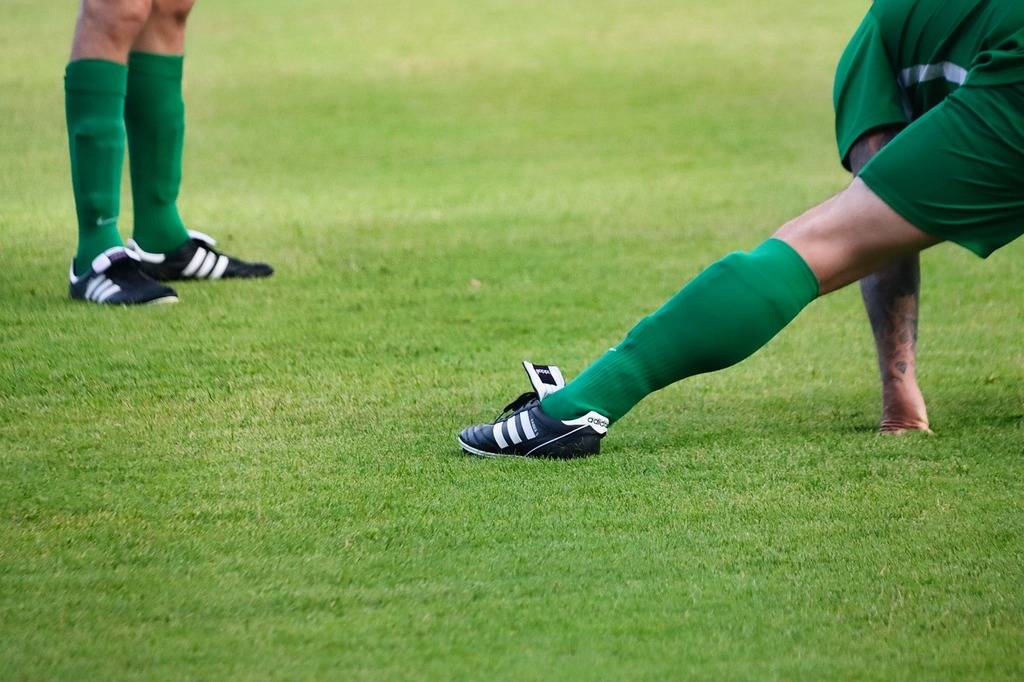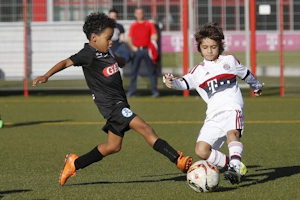Injury prevention exercises in football

The photo is from pixabay_com
Football demands physical prowess, agility, and endurance from its players. However, the dynamic nature of the game leaves players prone to injuries. Injuries not only affect individual players but can impact the performance of the entire team. To mitigate injury risk, adopting a comprehensive training approach and paying attention to specific areas is crucial. Let's explore the best exercises for preventing football injuries in this article.
Dynamic Warm-Up
A solid warm-up program is the foundation of football injury prevention. Dynamic warm-up routines increase heart rate, enhance blood circulation in muscles, and improve joint flexibility.
The photo is from pexels_com
The active nature of the exercises, simulating movements made during a match, includes key elements of an effective dynamic warm-up:
- Jogging with high knee lifts: gradually increasing the intensity of jogging followed by knee lifts helps raise the heart rate and warm up the lower body muscles;
- Dynamic stretching: include dynamic stretches like leg swings, hip circles, and arm rotations to improve flexibility and range of motion;
- Agility training: perform exercises with agility ladders, hoops, and cones for more complex technical work and to improve coordination.
Plyometric Exercises
Athletes often engage in activities requiring sudden bursts of energy, such as sprints, leaps, and quick changes in direction, underscoring the importance of developing dynamic power. Plyometric training, distinguished by swift contractions and extensions of muscles, plays a crucial role in amplifying this kind of power while also enhancing the communication between nerves and muscles.
The photo is from pexels_com
To boost your performance and minimize the risk of injury, consider integrating these plyometric drills into your exercise regimen:
- Box jumps: propel yourself onto a raised platform and then immediately leap off to build strength in the muscles of your feet and knees, as well as fortify your ligaments;
- Hop-to-step jumps: execute exaggerated strides to promote forceful advancements, simulating an enhanced running mechanism;
- Depth jumps: from a raised position, drop down and quickly leap upwards upon touching the ground, aiming to boost both your explosive strength and nimbleness;
- Lateral cone jumps: sharpen your agility and quickness by hopping over cones in a lateral motion.
Plyometric training not only escalates your dynamic power, but also conditions your muscles to withstand the high demands of competitive play, thus lessening the likelihood of injury.
Flexibility and Mobility Exercises
Maintaining adequate flexibility and mobility is vital to prevent injuries in football. Players need to be able to move freely in various directions without restriction or stiffness.
The photo is from pexels_com
Incorporating flexibility and mobility sessions into training significantly reduces the risk of muscle and ligament strains. Include the following elements in your warm-up:
- Dynamic lunges: performing controlled dynamic lunges increases hip flexibility and mobility;
- Hip flexor stretches: stretching the hip flexors improves mobility and reduces hip-related injury risk;
- Calf stretches: stretching the calves enhances their flexibility, crucial for preventing Achilles tendon overload;
- Shoulder mobility workouts: performing circular movements with shoulders and arms.
A comprehensive stretching and mobility program, ideally performed both before and after training or matches, allows players to maintain muscle elasticity and recover faster.
Balance and Proprioception Exercises
Balance and proprioception (awareness of body position in space) are integral to injury prevention. In football, due to sudden changes in direction, players experience rapid shifts in their center of gravity, redistributing weight differently. The player's muscles must memorize a vast array of movements to remain coordinated under any circumstances.
The photo is from prepa-physique_net
Incorporate the following workouts to improve balance and proprioception:
- Single-leg exercises: perform squats, deadlifts, and balance routines on one leg to enhance stability;
- BOSU ball exercises: use a BOSU ball for squats and lunges to stimulate balance and coordination;
- Ladder agility: perform ladder agility drills to improve footwork and proprioception;
- Balance ball exercises: use a balance ball to improve joint stability and coordinated movements.
Enhanced balance and proprioception allow players to skillfully manage their bodies during unpredictable game episodes, such as sudden movements, collisions, and ball control, preventing falls, dislocations, bruises, and fractures.
Neuromuscular Training
Neuromuscular training focuses on enhancing the link between the brain and the body's muscular system. These sessions assist athletes in recognizing tension within their body, executing movements with proper form, activating additional fibers, and correcting imbalances. This holistic approach effectively minimizes the likelihood of overexertion and injuries.
The photo is from entrainementdefoot_fr
These workouts help coordinate intermuscular and intramuscular efforts, incorporating functional movements into the training regimen that mimic actions performed during football matches: running, turns, stops, jumps. The main training mode involves a high volume of medium intensity repetitions so that the muscle "remembers" the movement. The following key elements are included:
- Multidirectional movements: incorporate routines that prompt players to move in different directions, mimicking the game's unpredictable nature;
- Balance and Stability: use balance cushions, wobble boards, or unstable surfaces to enhance coordination and stability of the torso;
- Reaction: perform exercises requiring quick response to stimuli, such as catching a ball or responding to visual signals;
- Power-Speed Muscle Training: include exercises with medium weights targeted at specific muscle groups involved in football movements. These include squats, lunges, presses, work with hurdles, bands, medicine balls, and partner resistance.
Functional Movement Screening
Functional movement screening is designed to assess players' movement patterns. The goal is to identify potential imbalances or weaknesses that could lead to injury.
The photo is from pexels_com
By identifying problem areas, coaches and instructors can develop targeted measures to address these issues and reduce the risk of injury. Key screening elements include:
- Assessment of fundamental movement patterns and phases: assess the correctness of basic power-speed exercises and quickness training performed by players: squats, lunges, bending and extending legs and arms, landing on the foot, and hip drive during running. This helps to identify asymmetries or dysfunctions leading to incorrect technique, reduced fitness, overloads, and strains;Scoring system: use a standardized scoring system to quantitatively assess the quality of movements and identify areas needing improvement;
- Personalized corrective exercises: develop individualized training programs aimed at specific movement deficiencies identified during screening;
- Regular monitoring and reassessment: track players' progress over time and adjust intervention measures as necessary to optimize movement quality and thereby reduce the risk of injury.
PNF Stretching or Proprioceptive Neuromuscular Facilitation (PNF)
This technique is highly effective in enhancing flexibility and alleviating bodily tension. It can also lessen pain and lower the chances of sustaining injuries during activity.
The photo is from pexels_com
Unlike static techniques, PNF involves alternating contractions and relaxations to enhance muscular flexibility. The main characteristics of this type of stretching include:
- Contraction-relaxation technique: before relaxing the muscle, stretch its antagonist muscle maximally for a few seconds. Then, after stretching, start contracting it, applying slight resistance to the contraction;
- Stretching with a partner: coaches or team partners provide yielding resistance during the contraction phase, facilitating relaxation of antagonist muscles and small muscle groups not involved in the movement;
- Multiple repetitions: perform several series of contractions and relaxations to gradually increase flexibility and mobility;
- Inclusion in warm-up and cool-down programs: include PNF stretching exercises at the beginning and end of sessions to prepare muscles for activity and aid in recovery.
In conclusion, injury prevention is an ongoing serious task for players aiming for excellence on the field. The seven main sets of exercises outlined above provide a strategic approach to strengthening the body under the demanding conditions of the game. Responsible coaches, fitness instructors, and players should draw on these fundamentals for a professional approach to powerful and active training without any health issues.
Find Football tournament













